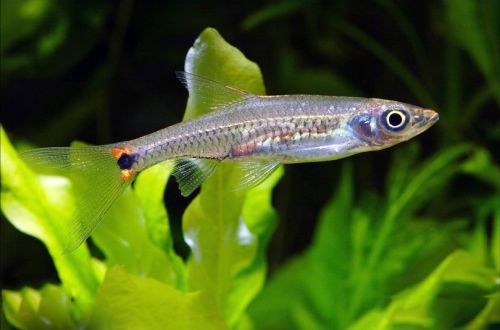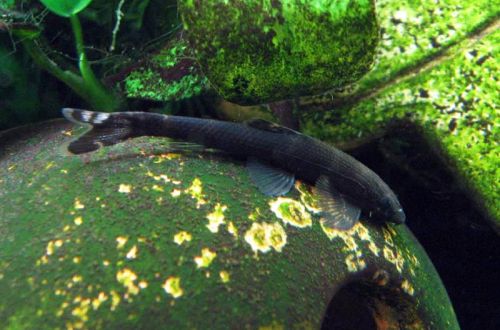
Danio Dadiburgiora
Danio Dadiburjori, scientific name Laubuka dadiburjori, belongs to the family Cyprinidae (Cyprinidae). The fish is named after Mumbai aquarist Sam Dadiburkhor, thanks to whose efforts this species became known to science.
Contents
Habitat
The fish comes from South Asia from the territory of the western states of India (Goa, Karnataka, Kerala and Tamil Nadu). Inhabits numerous river systems originating in the mountains of the Western Ghats and flowing into the Arabian Sea.
A typical biotope is a shallow stream with dense coastal and aquatic vegetation.
Brief information:
- The volume of the aquarium – from 40 liters.
- Temperature – 20-24°C
- Value pH — 6.0–7.0
- Water hardness – soft (1-9 dGH)
- Substrate type – any
- Lighting – subdued, moderate
- Brackish water – no
- Water movement is weak
- The size of the fish is 2–3 cm.
- Feeding – any food of suitable size
- Temperament – peaceful, active
- Keeping in a flock of 8-10 individuals
Description
Adults reach a length of 2–3 cm. The body pattern consists of a dark blue dotted line stretching horizontally from head to tail against a golden or orange background. Belly silvery. Fins translucent, colorless.
Sexual dimorphism is weakly expressed, males practically do not differ from females outwardly.
Food
Not demanding on the composition of food. In most cases, the daily diet can consist of dry food in the form of flakes, granules, tablets and similar products. A good addition would be live or frozen fresh food in the form of brine shrimp, small bloodworms, daphnia and similar products.
Maintenance and care, arrangement of the aquarium
The optimal size of the aquarium for a flock of 8-10 fish starts from 40 liters. In the design, it is desirable to create a dimly lit environment with an abundance of aquatic vegetation and snags, which will become a place for shelters. Floating plants will provide additional shade to the aquarium.
Soft filtration should be used and excessive water movement should be avoided, as such small fish will not be able to withstand a strong current. A simple airlift filter with a sponge is a good choice.
The maintenance of Danio Dadiburjor is quite simple, the key points are high-quality nutrition, maintaining the composition of the water in an acceptable range of temperatures and pH / dGH values, as well as regular maintenance of the aquarium (removal of waste, replacement of part of the water with fresh water).
Behavior and Compatibility
Peaceful active fish. It is desirable to maintain in the community (at least 8–10 individuals of similar size species from among miniature cyprinids, such as other zebrafish, rasboras.
Breeding / breeding
Under favorable conditions and feeding protein-rich foods, spawning occurs regularly. Fish spawn at the same time as a whole group. Eggs are fixed closer to the surface of the water on the leaves. Parental instincts are not developed, so the masonry can be quickly eaten by adult fish. If the leaf with eggs is transferred to a separate tank in time, this will significantly increase the chances of survival of the offspring. The incubation period lasts 2-3 days. In the next 4–5 days, the fry that have appeared remain in place, feeding on the remains of the yolk sac, and only then begin to swim freely. From this point on, it is necessary to start feeding microscopic foods, such as shoe ciliates. As they grow, brine shrimp nauplii and similar foods are included in the diet.
Fish diseases
The cause of most diseases is unsuitable conditions of detention. If the fish has not been attacked by neighbors in the aquarium, has not been injured, then the problem probably lies in the poor quality of water and food. By eliminating the causes, the body of the fish, as a rule, will be able to cope with the disease on its own. However, with long-term negative effects, medical treatment will be required. For more information on symptoms and treatment methods, see the Aquarium Fish Diseases section.





